
17 minute read
COLLABORATING TO CREATE THE FUTURE FOOD AND BEVERAGE FACTORY
HELPING MANUFACTURERS AND THEIR INNOVATION PARTNERS SUCCEED
Most food and beverage manufacturers understand that accelerating digital transformation and maximising the value of data will be central to tackling today’s challenges.
The climate crisis, a national skills shortage, a global pandemic: any one of these factors in isolation is enough to disrupt a food and beverage manufacturing industry. In 2020, all of these factors coalesced to create unprecedented levels of pressure. Both manufacturers and machine builders adapted quickly to try and protect staff while minimising supply chain issues. But they’re also hard at work considering how best to move forward in the long term.
Most understand that accelerating digital transformation and maximising the value of data will be central to tackling these challenges. Manufacturers know that operations need to become more resilient and agile, with minimal machine downtime and the ability to pivot production at speed. Productivity and efficiency need to go up while costs need to go down. There’s a demand for more proactive planning, more preventative actions and more recommendations. And all of this needs to be achieved with sustainability targets in mind.
The race to transform successfully is on. Some are already out of the starting blocks, embracing digitalisation and automation to drive outcomes. Machine builders, of course, have a pivotal role to play in this shift supporting end users with greater machine performance and roadmaps for the future. In fact, there’s a growing awareness that since manufacturers and machine builders can bring different things to the table, organisations can’t solve these problems on their own.
Silos of innovation and best practice need to be bridged, with manufacturers and machine builders finding the sweet spot for collaboration. But it’s not always clear what role different parties need to play. For businesses that have historically worked on a transactional basis only, working together is easier said than done.
To achieve this, manufacturers and machine builders need clear oversight of what their respective strengths are, as well as what the other is expecting and can feasibly deliver. New partnerships and forums for innovation need to be developed and external technology providers may have a role to play in facilitating the shift.
The motivation for innovation
Even before external factors like the COVID-19 pandemic cast a shadow over the industry, food and beverage manufacturers were already under pressure from issues like aging infrastructure and rising costs. Now with technical, economic, political and workforce challenges in the mix manufacturers collectively recognise that innovation and greater machine performance will be critical to their future success.
Strategic motivations
Manufacturers are looking to radically improve machine performance across a range of areas. Quality of output remains a key concern, but manufacturers also need to be able to withstand disruption, adapt faster to change, and hit growing sustainability targets.
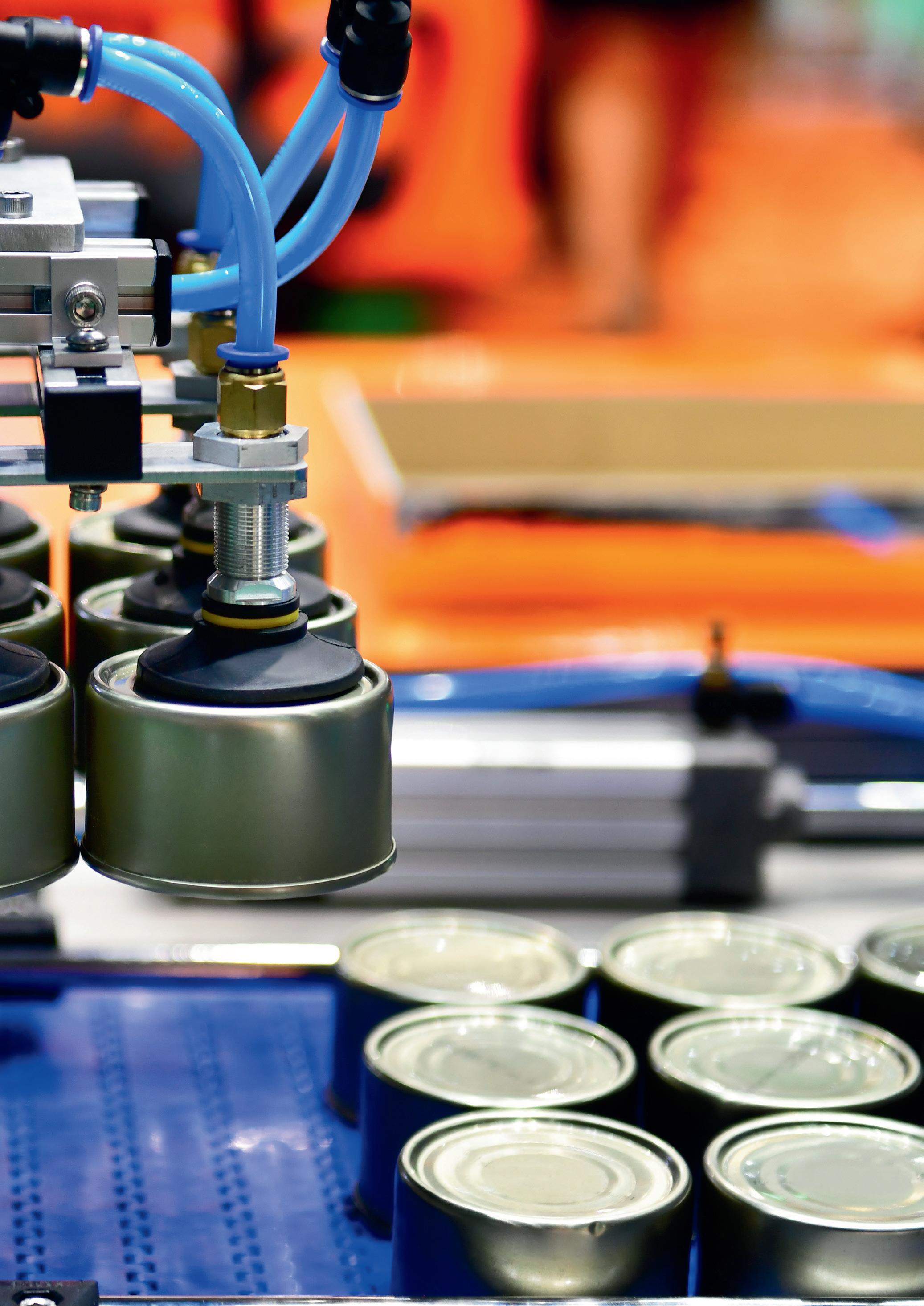
Resilience and agility
Improving business resilience, machine performance and production agility is a growing concern for food and beverage manufacturers facing supply chain risk, demand fluctuation and production challenges. Even brief downtime can have serious and wide-reaching effects, meaning there’s strong industry appetite both for improved diagnostics, but also for proactive, preventative maintenance of machinery.
Threats to the supply chain are driving a need for better scenario planning, with manufacturers seeking the ability to change production levels quickly as needed. Many are exploring greater flexibility for production times and seeking ways to scale up and down faster to meet demand closer to real time.
Efficiency and productivity
The demand for greater productivity has always been present in manufacturing. However, growing pressures like labour shortages and a need to facilitate remote working, for example mean manufacturers are facing spiralling workforce productivity challenges.
Bots and automation provide the opportunity to reduce spreadsheet work and repetitive tasks, but skills gaps mean innovation can’t always be taken advantage of. Manufacturers ultimately need support, not only with machinery and software that facilitates automation, but with people and process training.
At the same time, manufacturers are striving to create efficiencies wherever they can, minimising costs while maintaining quality. One way of doing this is to improve machine resilience and extend equipment lifecycles; many manufacturers are looking to sweat their assets more effectively to avoid the need for costly new kit.
Doing this successfully requires better maintenance and understanding of asset health which in turn demands not only better HMIs and dashboards with smarter integrations and greater visibility of machine data, but also the skills and experience to understand and respond to that data at speed.
Sustainability
From environmental legislation to investor and consumer pressure, sustainability is high on the agenda. Having the ability to transform energy use and packaging is rapidly evolving into a central issue for suppliers and consumer food and beverage brands alike.
To achieve this goal, manufacturers must be able to track, measure and mitigate their environmental impact. But as it stands, many lack the ability to accurately understand their energy usage or the carbon footprint of their production and operations environment.
Some are more mature than others, but all are reaching the end of the road with conventional efficiencies for energy and down-gauging for packaging. Having done all they can, the onus is increasingly on machine builders and other technology providers to help manufacturers reach the next stage of sustainable productions.
For all of these strategic priorities, digital transformation and in particular, better access to and ability to use data can deliver powerful results.
But as it stands, food and beverage manufacturers face serious challenges in gathering, analysing and reacting to data effectively. For the industry to progress, these roadblocks must be overcome.
Data and digitalisation
Production line environments are rich with data, and manufacturers are keen to both utilise it effectively, and embrace digitalisation more widely. Yet data maturity is low, and most manufacturers are still in the early stages. Some have limited data visibility, with interfaces that make data gathering difficult to manage, while others have an abundance of data but no real sense of what to do with it.
Fundamentally, all the data in the world means nothing if it’s not possible to analyse and respond to it in a timely manner. It should be noted, however, that this is as much a point around people and processes as it is technology. As automation and data gathering increases, the demands on people change. There’s anxiety about what growing automation means for certain roles. And while the value of greater data usage and digitalisation is obvious, the absence of relevant skills in the workforce means it's difficult to realise value.
As a result, some businesses are cautious about a tech-led agenda that neglects to facilitate people and process change sensitively. Even as tech evolves and digital transformation accelerates outcomes, it can create serious problems with those working onsite.
Increasingly employees are being asked to shift to more analytical, problem-solving roles, which means major cultural and skills evolution is required whether that’s reframing objectives, retraining those whose jobs have been impacted by automation, or bringing in external support to upskill existing workforces. Ultimately, those working in the industry need thoughtful support and considered training to move in step with transformation.
MANUFACTURERS ARE LOOKING TO RADICALLY IMPROVE MACHINE PERFORMANCE ACROSS A RANGE OF AREAS.
MACHINE BUILDERS ARE EXPLORING HOW THEY CAN HELP MANUFACTURERS PIVOT AT SPEED – A CAPABILITY THAT HAS PROVED CRUCIAL DURING THE COVID-19 PANDEMIC.
Supporting change
With so much complexity to wade through and with technology, people and process challenges to untangle food and beverage manufacturers need support if they’re going to succeed. Machine builders and other industry tech providers have an important role to play and manufacturers are looking to these organisations to assist.
There’s an emerging sense that manufacturers want to evolve how they buy machinery. Their desire for assurances around KPIs, and SLAs, suggests that a shift to a servitisation model could be beneficial, rather than simply buying machinery and taking it from there.
Beyond this, they want to work with external partners to evolve, adapt, learn and grow. With internal skill sets often lacking, manufacturers are seeking expert voices that can guide them on resilience, agility and predictive capabilities. And they don’t just want access to more data they need help turning this into useful, actionable information.
Stepping up to support: machine builder ambitions
At present, machine builders are some way off being able to collaborate with manufacturers on all of their strategic goals. However, their capacity for innovation is significant, and many are collaborating with manufacturers successfully on specific briefs and problem solving such as making specific machines more agile.
Broadly, many providers feel they can offer guidance and visibility of digital strategy for assets, and assurance that assets will be kept up-to-date with factory norms and connectivity over their lifecycle.
Yet as the industry gets to grips with ambitions around the data-driven factory of the future, a general shortage of data and analytics experts in the industry means machine builders aren’t yet in a position to help to full effect.
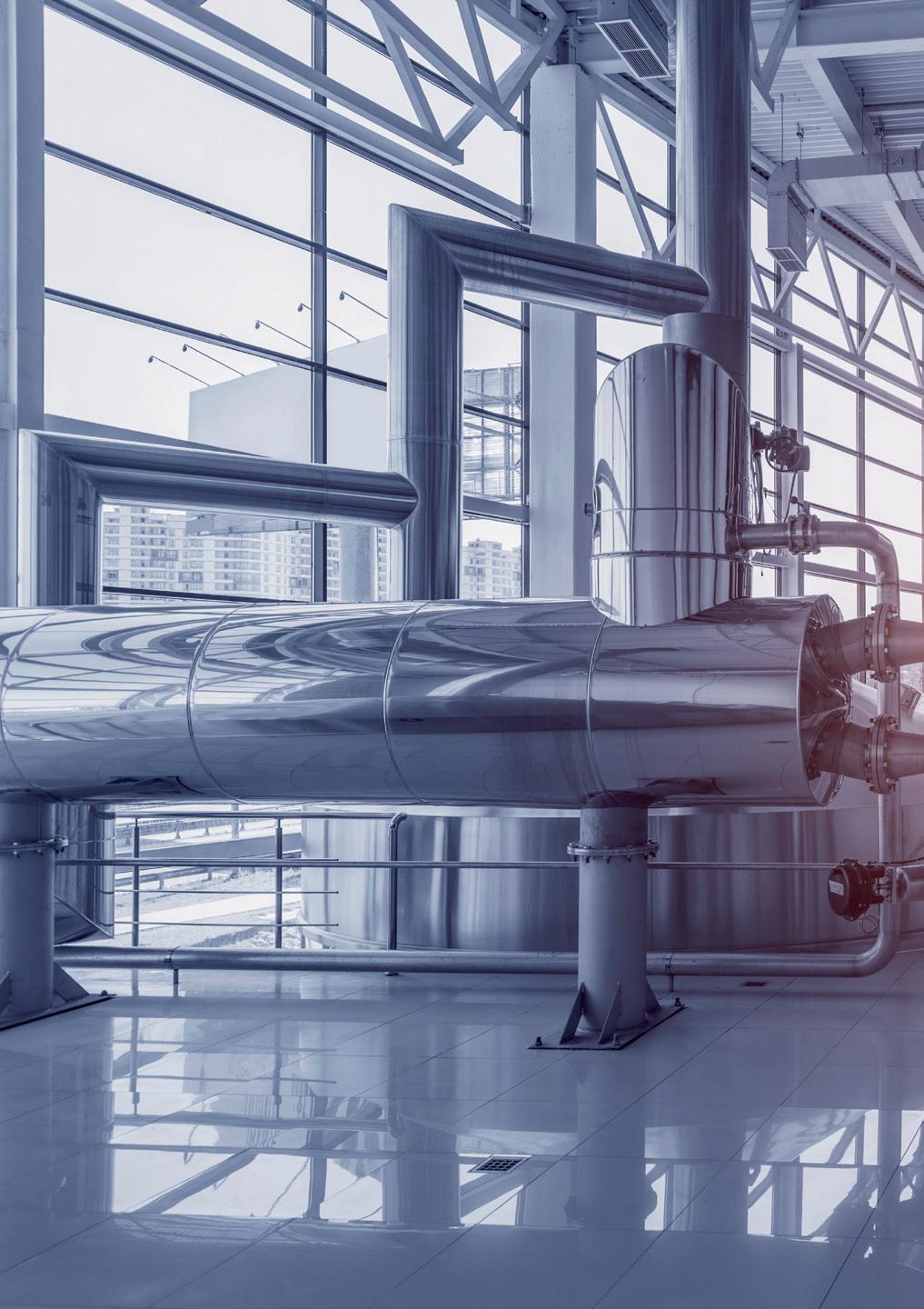
However, they have ambitious plans for the future.
Facilitating agility
Machine builders are exploring how they can help manufacturers pivot at speed a capability that has proved crucial during the COVID-19 pandemic. Some manufacturers have needed to adapt packaging, repackaging products previously sent to hospitality businesses for a direct-to-consumer model. Others had to change the size of packaging; it’s just one example, but with many spending Christmas in lockdown, demand for large turkeys decreased, meaning there was a greater need to package crowns and legs.
Machine agility is fundamental to achieving this. It can also contribute to sustainability goals, as green packaging alternatives emerge and manufacturers have to adapt. And it may even support manufacturers looking to decentralise sourcing and rely on food grown locally meaning the goods requiring packaging change with the seasons.
Creating the conditions for resilience
With end-user manufacturers seeking more assurance about performance and availability, machine builders are increasingly advising on predictive capabilities along with proactive maintenance and preventative fixes to ensure operations can continue without interruption.
Many machine builders agree they should act as the experts on how their equipment runs, how it can be maintained, and how assets can be sweated although they’re also aware that some use cases are very specific, making it hard to commit to contractual guarantees in a scalable way.
Research suggests that while most manufacturers are discussing resilience, not all of the machine builders are having these discussions with end users meaning there’s a need for more conversation between the two groups.
Remote management
The COVID-19 pandemic has forced an acceleration for those exploring how the production line can be managed, maintained, altered or analysed remotely.
However, the constraints of lockdown aren’t the only motivating factor here. With skills in such short supply, using augmented reality or remote management capabilities eases the burden on a limited pool of skilled individuals being physically in the room.
Data management
With manufacturers producing more and more data, machine builders are looking to support them with utilising this information effectively. What this looks like in reality varies from dashboards that make data easier to understand, to integrations at the edge that ensure insight can be shared easily.
As with manufacturers, the overall conclusion is that machine builders are working hard to innovate and accelerate digital transformation all while moving towards an operational model that enables everyone across the industry to collaborate for better outcomes.
However, the fact remains that there are still hurdles to be jumped on both sides such as talent shortages, facilitating collaboration and even financing the necessary transformation.
Collaboration for the future factory
Although there’s a clear sense of where innovation efforts should focus, there are undeniably many challenges afoot for both food and beverage manufacturers and the machine builders hoping to support them.
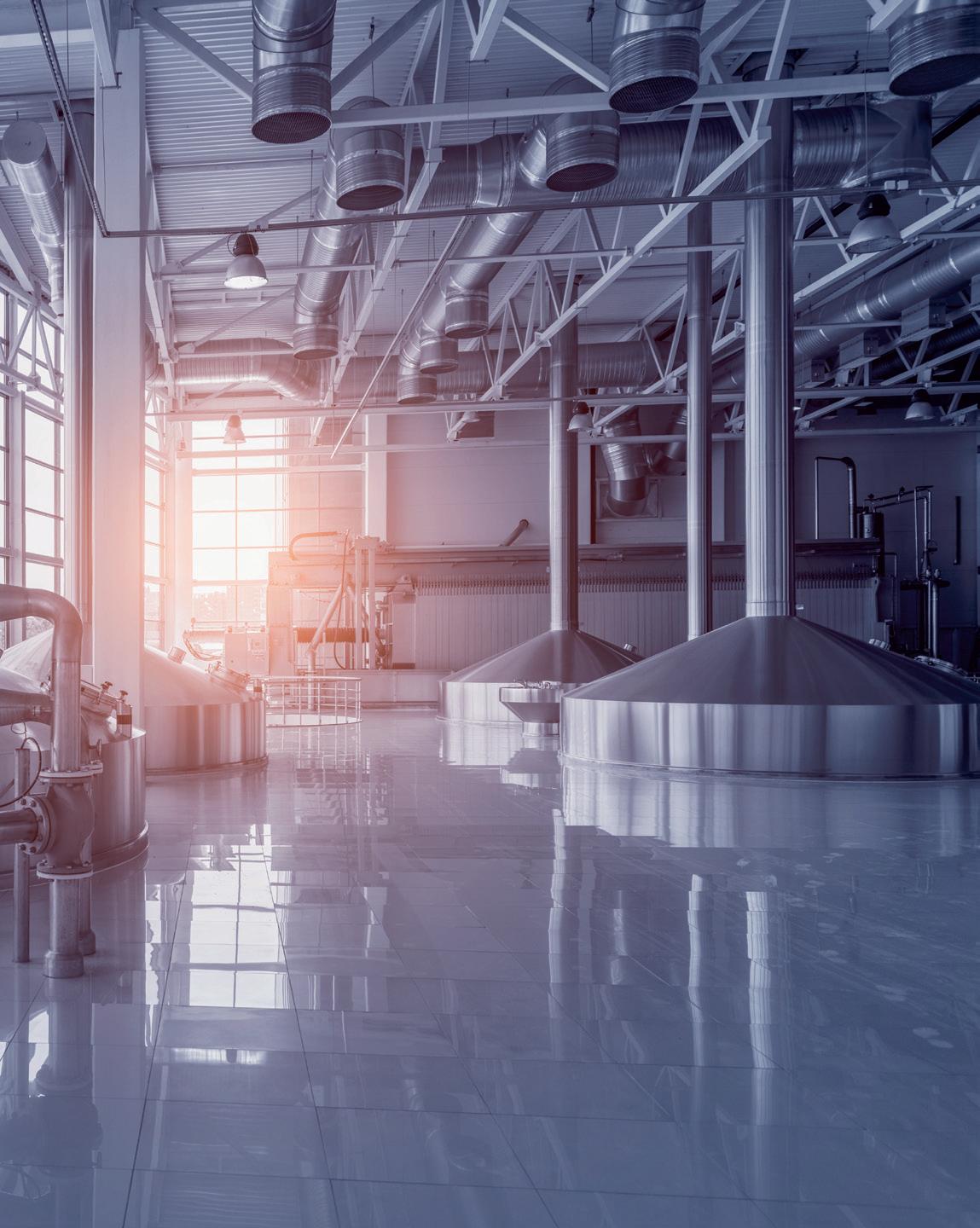
There’s uncertainty about finding or developing the right talent to lead on key projects. Since no single organisation alone has the time, talent and resources to solve all of the industry’s problems, a big cultural shift is required to facilitate the collaboration that’s needed. And with so much innovation required, organisations are also being placed under financial pressure, at a time when many are already feeling the pinch due to the broader economic situation.
But, more positively, there is an emerging sense of how to move forward.
Manufacturers understand both the trends in the market, and what innovation should look like in order for the industry to thrive. From smarter data analytics to remote management and greater flexibility in the production line, these businesses can see a smarter, more resilient and more agile future for the factory floor and they’re keen to build on recent transformational changes and learnings.
Perhaps most importantly there’s a growing sense that businesses don’t have to figure all of this out alone. Everyone involved sees the need for a more holistic approach to achieving all of these ambitions with people, processes and technological innovation considered in tandem, rather than silos.
There’s an appetite for collaboration, understanding and sharing of best practice across the industry. With skills in short supply, and pressures mounting, food and beverage manufacturers are keen to be supported and guided by those who provide their production line equipment. Machine builders, meanwhile, are also keen to share knowledge across the industry, while taking on more of a consultative role for manufacturers.
But since this level of collaboration is new ground for an industry that has traditionally worked in silos, there’s a need for external partners to step up and facilitate.
Siemens Ltd www.siemens.com.au
Access Permissions Via Cards And Stickers
The PITreader card access permission system offers increased flexibility through a transponder in card and sticker format.
Pilz Australia Industrial Automation LP https://bit.ly/3LPj7vq
Photoelectronic Sensors With Hygienic Housing
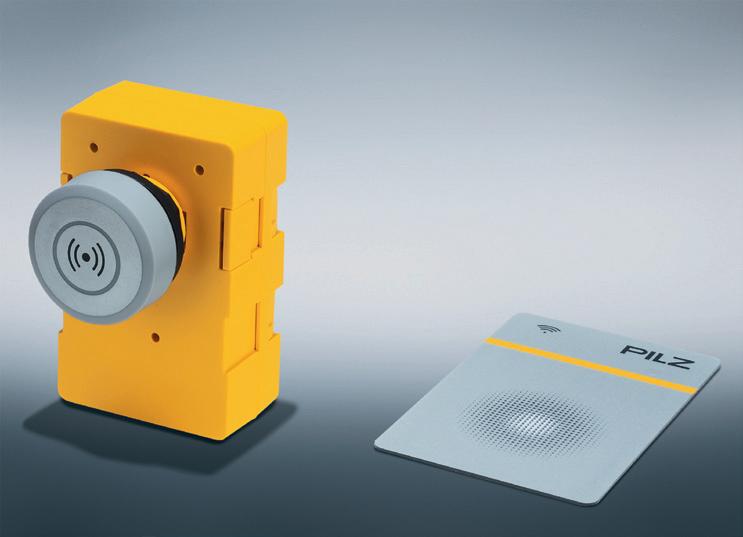
The laser-welded stainless steel housing of the InoxSens hygienic photoelectronic sensors is corrosion-free and resistant to cleaning agents.
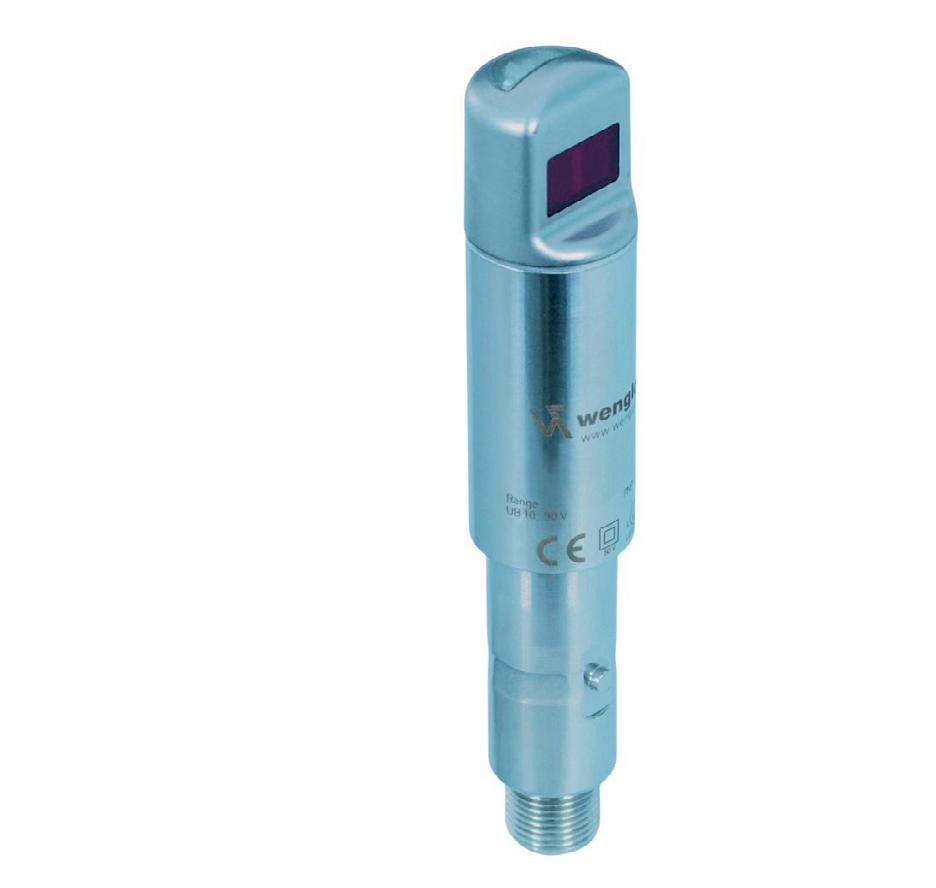
Treotham Automation Pty Ltd https://bit.ly/3Lz4MD6
Sil 3 Output Drivers
Pepperl+Fuchs’ latest SIL 3 output drivers close the gap in the Pepperl+Fuchs range of SIL 3 components.

Pepperl+Fuchs (Aust) Pty Ltd https://bit.ly/40xd5Ug
>EMBEDDED BOX PC
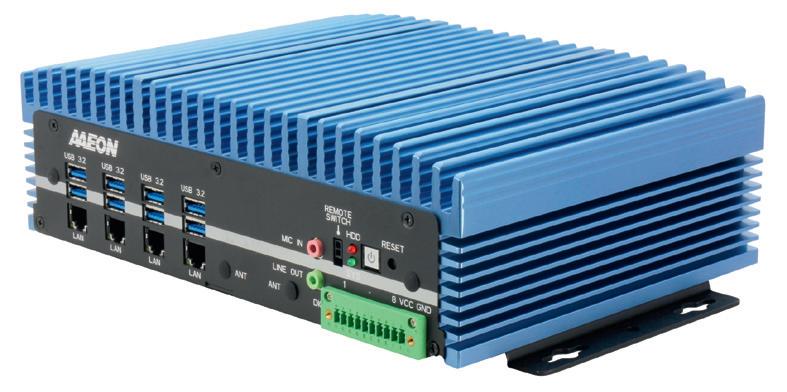
The BOXER-6645-ADS is built to withstand harsh environments, including extreme temperatures, shock, vibration and humidity.
Interworld Electronics and Computer Industries https://bit.ly/3n7sRGQ
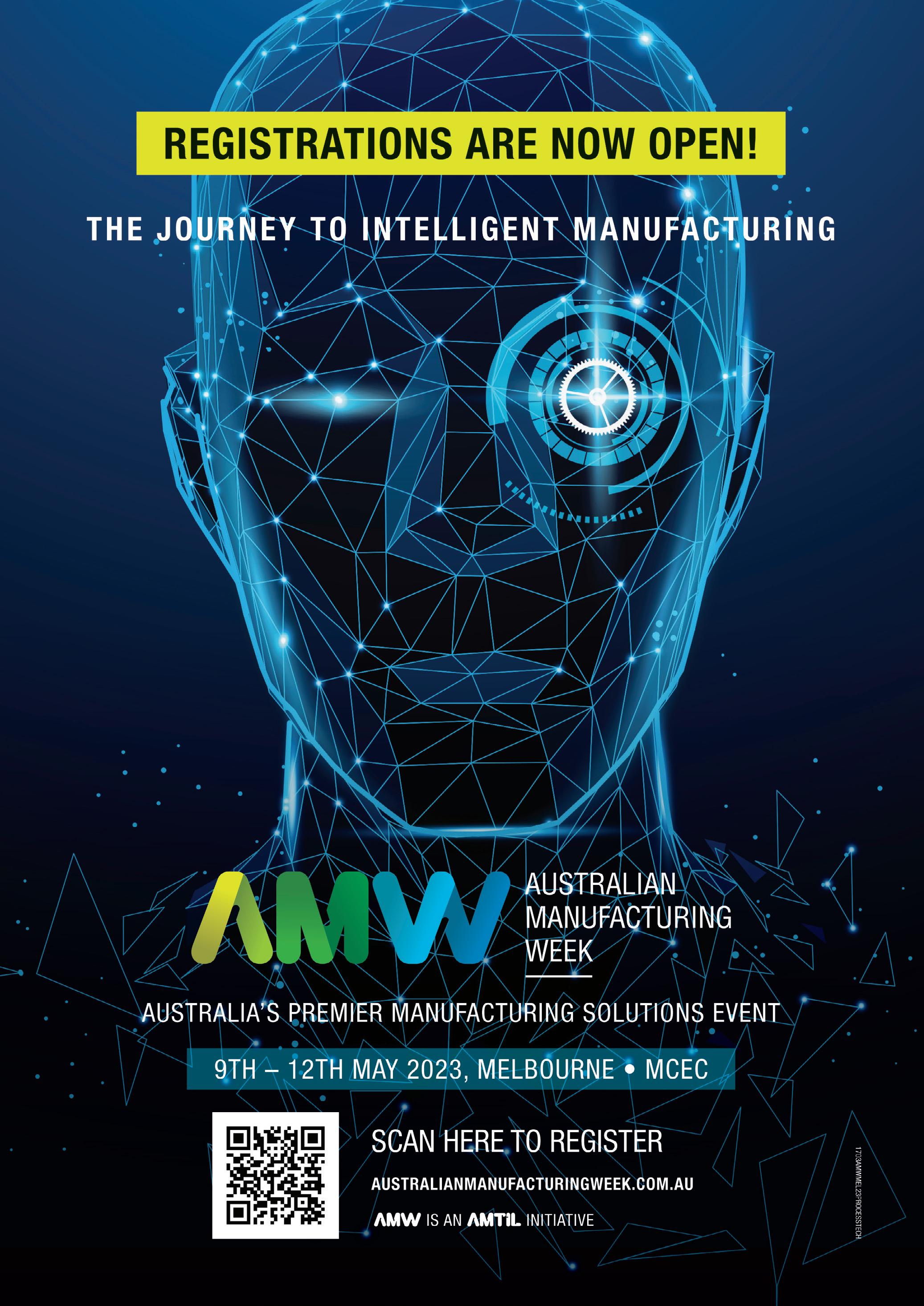
Distributed Control System
ABB has launched its latest release of ABB Ability Symphony Plus distributed control system (DCS), which it says will further support digital transformation for the power generation and water industries.
The updated Symphony Plus provides access to digital solutions, such as fleet asset management enabled by ABB Ability Genix Asset Performance Management. It also enables users to access process and alarm data from mobile devices through the ABB Mobile Operations application.
The product also features a simplified and more secure OPC UA connection to the edge and the cloud, without interfering with core control and automation functionality.
Critical data can now be viewed more flexibly, due to HTML5 webbased operation and engineering tools, promoting collaboration. Flexible field device management has also been enabled with ABB’s Field Information Manager (FIM), making the configuration, commissioning, diagnostics and maintenance of fieldbus instruments quick and easy.
ABB is also introducing the SD Series e-Class process controller that offers a low-disruption retrofit solution for traditional Harmony Rack (HR) installations. It is designed to bring increased speed, higher capacity and more functionality to HR systems and help enable digitalisation.

ABB Australia Pty Ltd www.abbaustralia.com.au
EXPLOSION-PROOF CONVERTER FOR OXYGEN DETECTION
Yokogawa has announced that it has developed the ZR802S explosion-proof converter as part of its OpreX Analyzers range. The ZR802S converter supports the IECEx, FM, ATEX, CSA, China Ex, Korea Ex, India Ex and Taiwan Ex explosionproof standards. It is intended for use with the ZR22S explosion-proof zirconia oxygen detector, an existing Yokogawa device with a durable zirconia sensor that is dust-resistant and easy to install and replace. Together, the ZR802S converter and the ZR22S detector comprise a complete oxygen analyser system.
Yokogawa has also introduced remote monitoring and other capabilities that reduce the time and effort required for maintenance operations and increase uptime. The ZR802S converter features a self-assessment function that provides early detection of deterioration in a zirconia oxygen detector, a data logging function that records essential maintenance information, and support for a number of key communication protocols.
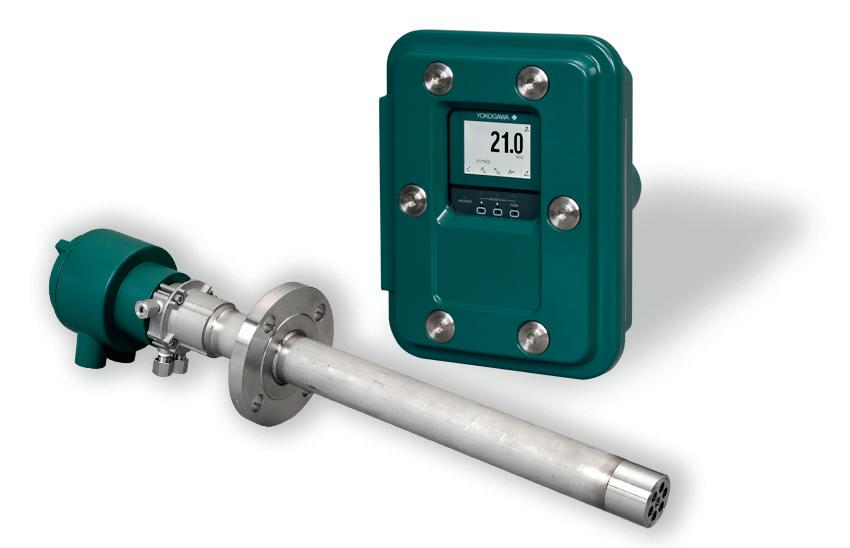
The automatic transmission of sensor resistance value at regular intervals, enables replacement timing to be determined without onsite inspection, while the data logging function reduces maintenance time and downtime in the event of a fault.
The ZR802S converter is said to be the only device in the zirconia oxygen analyser market that supports all three of communication protocols: HART7 for analog output, and Modbus TCP and Modbus RTU for digital communications. It also complies with the NAMUR NE43 guideline for the issuance of signals to indicate a sensor fault and the NAMUR NE107 guideline for onsite instrument self-assessment functions.
Yokogawa Australia Pty Ltd www.yokogawa.com/au
Compact Magnetic Field Sensors
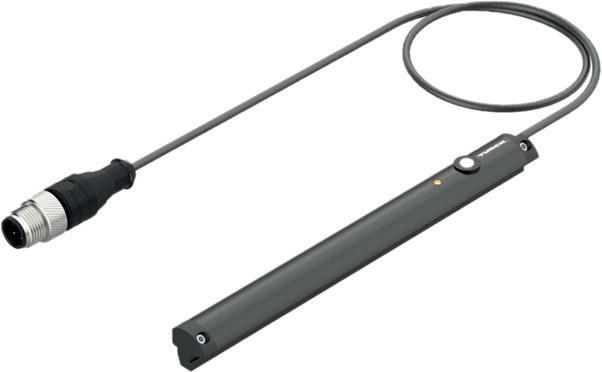
Turck has extended its range of compact position sensors with the WIM-IOL series for detecting magnetic pistons in pneumatic or hydraulic cylinders. The series consists of eight models with IO-Link 1.1, covering measuring spans from 32 to 256 mm. Users can teach the measuring range of sensors quickly and conveniently to the stroke of the pistons in the cylinder with IO-Link and the integrated pushbutton. This makes mounting simpler when compared to analog sensors, as they either have to be fitted exactly to the dead points or operate with correction factors in the controller. The sensors are IP67-rated and operate with a 15-bit resolution.
Typical applications include feed detection in injection moulding or automatic screwing machines, the positioning of the welding head with ultrasonic welding and the monitoring of the foil tension in packaging machines.
Turck Australia Pty Ltd www.turck.com.au
Treasury Wine Estates (TWE) is one of the world’s largest wine companies, selling its wines in more than 70 countries and employing more than 2600 people across nine locations around the world. The company operates wineries not only in South Australia, but also in New Zealand, the USA, France and Italy.
In 2022, TWE unveiled its new state-of-the-art winemaking facility in the Barossa Valley, the largest premium winemaking site in the Southern Hemisphere, with the capacity to produce more than 100 million litres of wine every year. It is also its largest bottling operation, packaging up to 216 million bottles per year.
In 2019, when TWE was beginning to design its winery expansion, it was seeking an automation system that would improve on the cumbersome maintenance and inflexibility of the traditional hardwired valves and sensors that had been used on previous sites. As a completely new greenfield installation, this was an opportunity to embrace new technology across the whole winemaking operation, improving efficiency and safety for workers.
Bürkert presented TWE with an opportunity to digitally transform its network for the new tank farm and bring its infrastructure in line with Industry 4.0 and modern digitalisation trends using IO-Link capabilities. Bürkert Type 8801 - ELEMENT On/Off Valve Systems were chosen for fermentation, glycol and must delivery (heating and cooling) applications across a tank farm of over 400 tanks. The fully integrated valve and automation system has an IP65/67/NEMA 4X protection class and high chemical resistance, suitable for the environmental demands of an outside tank farm.
Today, digitalisation is the fastest moving automation requirement for food and beverage producers across the world. Ensuring simplicity in installation and management, reducing maintenance and improving environmental footprint are also part of this modern automation infrastructure. By using smart valves and sensors and the right fieldbus technology, wineries can embrace automation for now and into the future while saving on implementation costs.
“Working closely within this industry and hand in hand with Australian winemakers, we are ensuring that Australian producers are at the forefront of this movement,” said Bürkert Australia’s General Manager, Chris Hoey. “In the implementation of digitalisation across a winery, we can begin assessing and improving wastage, blending errors, burdensome maintenance, long wait times for upgrades and installations, whilst improving energy efficiency, hitting sustainability targets and reducing bottom line expenditure.”
The automation infrastructure proposed by Bürkert offered the opportunity of moving to best practice with smart equipment and connectivity that could improve the overall control and management of the winery. Bürkert offered valve systems with IO-Link capability, due to IO-Link’s seamless integration capabilities as well as its standardisation as an independent fieldbus network.
Over the next two years, the project got underway and collaboration between partners, including Chris Hoey and National Engineering Manager Nelson Chymiak, ensured the tank farm was up and ready to go in no time.
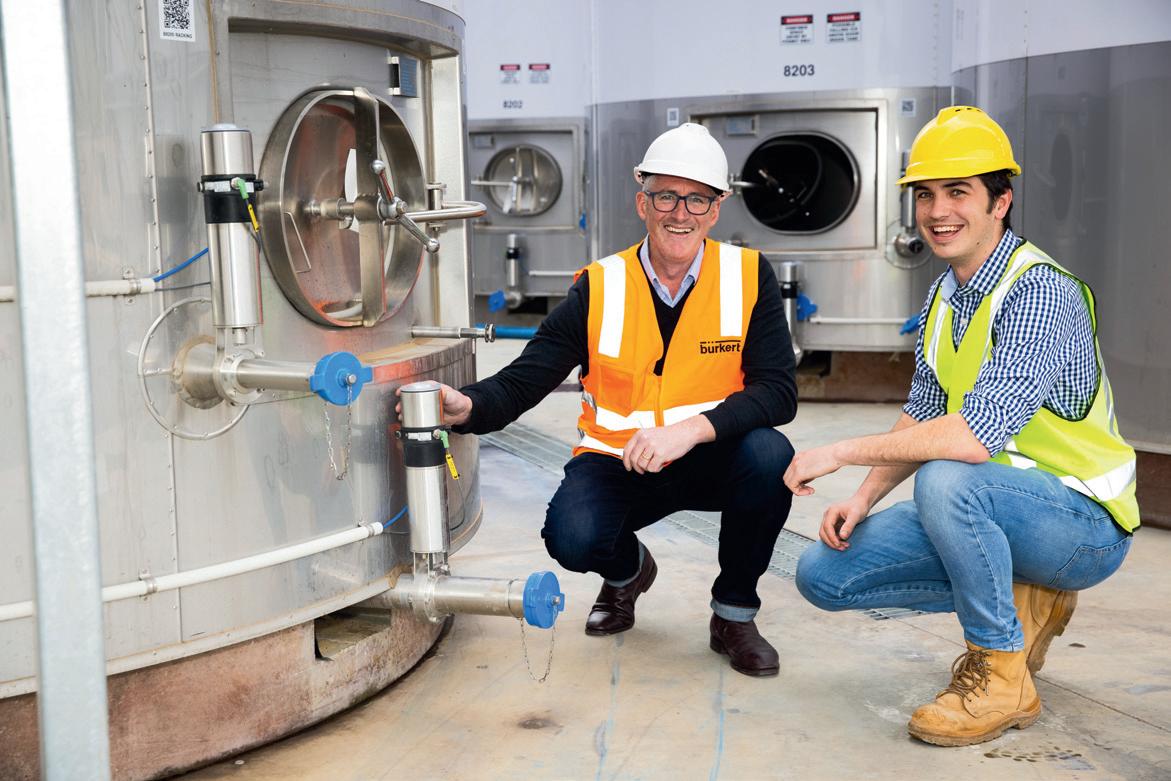
“The most noticeable positive impact of this solution was the diagnostic information provided from the network connected field devices,” said Harry Robinson, Project Engineer for Treasury Wine Estates.
He also received positive feedback from the electrical contractor that the single cable installation for each device was a welcome change from legacy systems.
Not only do the new valves supplied by Bürkert enable efficient errorfree activation of valves on wine tanks through QR-coded operation, they also improve safety in a number of ways.
Firstly, they can automatically prevent tank collapse by the automated activation of tank vent valves and remove the need for costly catwalks and access stairways to the tops of tanks. There is also a reduced risk of harm or injury due to operators working at heights or having others working overhead with risk of dropping implements onto staff below.
With traceability and transparency direct from the valves themselves, management and maintenance of the entire site can be controlled from one central point. Smart valve actions and alerts ensure reduced risk of wastage and faster reaction times if things go wrong, and having that peace of mind has made an incredible difference to the team and how the winery undergoes managing the winemaking process.
Although the site itself is still evolving and growing with further installation and upgrades, the bulk of the work is done and the foundations for a futureproof winery are in place. With IO-Link capabilities, flexibility of connectivity across the site means that the sensor and actuator network could be customised to TWE’s requirements.
Burkert Fluid Control Systems www.burkert.com.au
Refrigerated Air Dryers
ELGi Equipments recently expanded its range of high-efficiency non-cyclic refrigerated air dryers with the inclusion of three-phase options on five of its medium-sized models that produce flow rates from 210 to 590 cfm (5.95 to 16.71 m3/min).
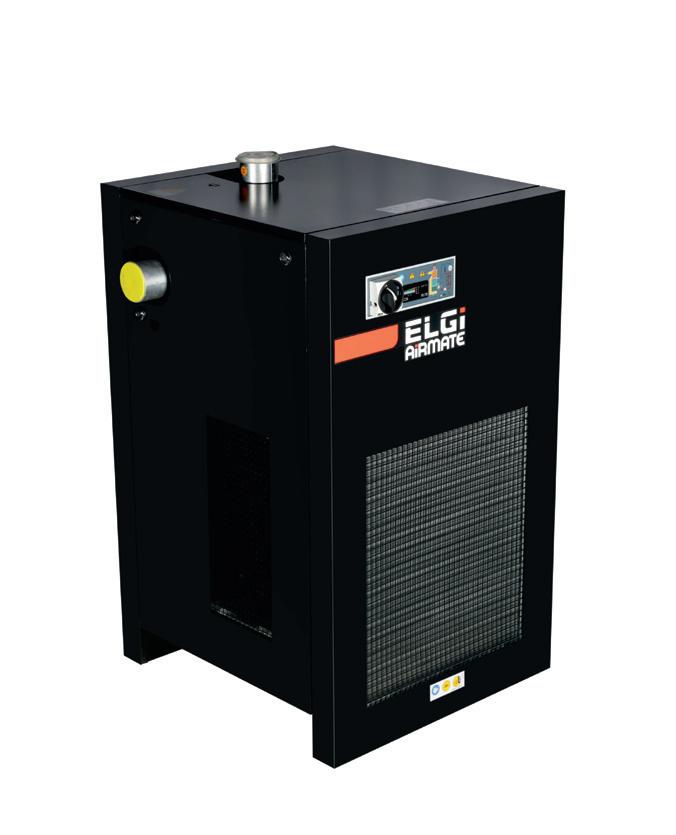
The Airmate EGRD series of non-cyclic refrigerated dryers feature a controller that is designed to ensure optimum efficiency by automatically reducing the fan speed or stopping the fan depending on the condensing pressure and dryer temperature. An efficient rotary compressor also provides low specific power consumption, which further contributes to the overall energy efficiency of the dryers, while the inclusion of ELGi’s next-gen heat exchanger minimises the pressure drop and maximises thermal efficiency.
For maximum efficiency, the three-stage heat exchange system with cold storage allows the unit to cycle on and off as necessary. The efficient and compact heat exchanger is also able to operate effectively in high ambient temperatures, making it suitable for Australian conditions. Energy savings are also achieved through the inclusion of a zero loss drain which means that only condensate is drained with no air loss.
The Airmate EGRD 200 to 500 series models include a fixed speed, hermetically sealed and energy-efficient rotary compressor. Together key features such as a suction separator muffler, an internal protector, a reverse-phase protector in the three-phase variants, as well as a run capacitor contribute to the reliability of these compressors. A hot gas bypass valve prevents the freezing phenomenon in the heat exchanger.
Elgi Equipments Ltd www.elgi.com.au
Online Toc Analyser Technology
TOC analyser technology plays a role in helping plants optimise process control, minimise product loss and reduce energy and wastewater treatment costs.
The Hach BioTector B7000i Online TOC Analyser is a TOC analyser, designed to detect product loss, decrease and conserve water usage and improve production processes.

The product measures organics in food processing conditions with 99.86% uptime and requires preventive maintenance only twice per year.
The analyser comes with a built-in self-cleaning sample line and reactor. This enables the B7000i to deliver results even if water contains high levels of fats, oils, greases, sludge and particulates or has pH swings. Installing the analyser decreases chemical dosing, reduces waste and reduces samples processes. Industry studies show that lost product can be reduced by over 15% by using accurate and continuous TOC measurement. Further savings of up to 40% can be made in the operating cost of the treatment plant by reducing energy and water consumption.
Hach Pacific Pty Ltd www.hachpacific.com.au
Electronic Access Permission System
Pilz has introduced an RFID-based electronic access permission system known as PITreader. Users can implement tasks relating to access permissions for plant and machinery whether simple or complex, from a simple enable and authentication of specific machine subfunctions to a complex hierarchical permission matrix.
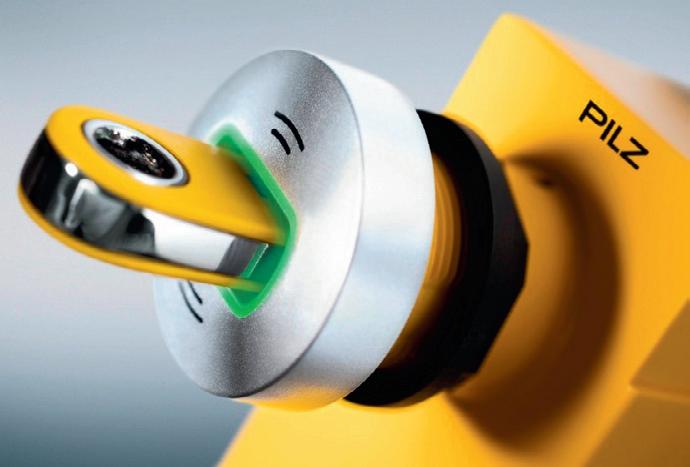
The transponder keys are also available in a freely writeable version and with fixed, stored permissions. For manipulation protection, the RFID keys can be coded using PITreaders with company-specific programming. PITreader is flexible and can be used as a standalone device or in conjunction with a Pilz controller.
PITreader is a compact device for controlling all access permission tasks, is suitable for use in a rugged industrial environment and is easy to retrofit. It has a standard installation diameter of 22.5 mm and a low modular depth of 45 mm.
Both Ethernet and serial communication are available, with a standard 24 V output if the transponder key is valid. All functions can be programmed via integrated web server, and front protection meets IP65/IP67.
Pilz Australia Industrial Automation LP www.pilz.com.au











